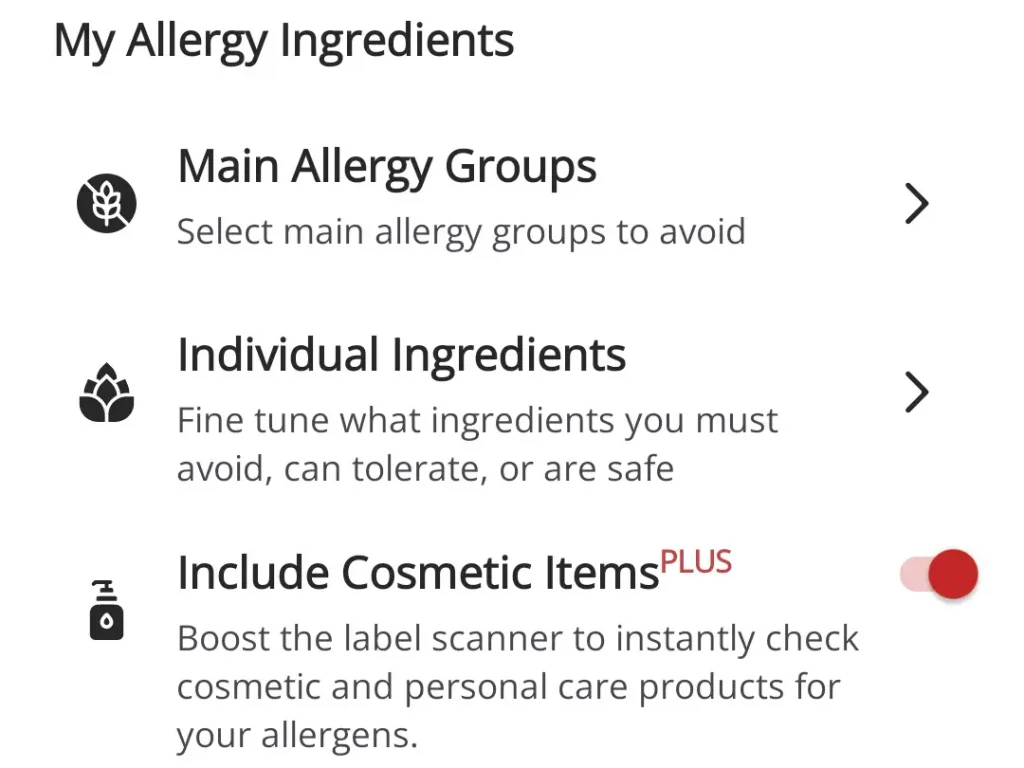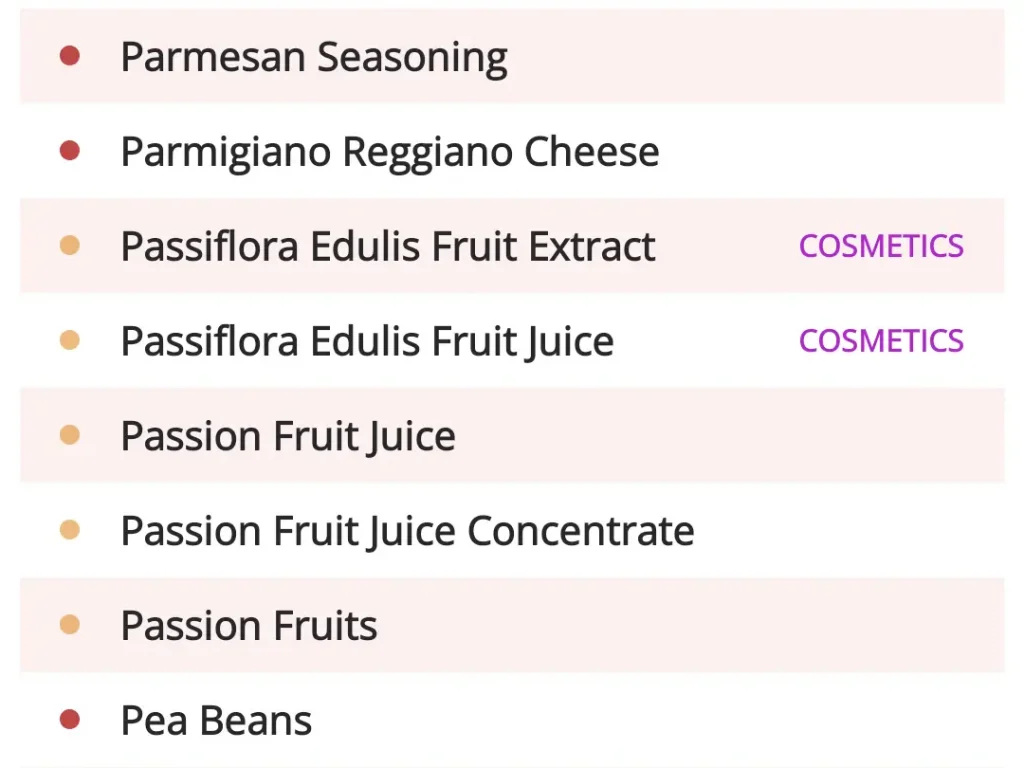Ever picked up a new skincare product, flipped it over, and felt like you needed a science degree just to understand the ingredient list? You’re definitely not alone. Those long, Latin-sounding names are part of a global system called INCI (International Nomenclature of Cosmetic Ingredients), and while they’re meant to bring order to the industry, they often leave us scratching our heads.
But why is it so hard, especially if you have food allergies? Let’s break it down.
For people managing food allergies, carefully reading ingredient labels is a daily habit for food products. However, it’s crucial to remember that non-food items like cosmetics, toiletries, and even bath oils can contain food ingredients. The risk isn’t just from accidental ingestion (like a child getting lip balm in their mouth); skin contact can also trigger reactions like hives or dermatitis.
The Hidden Language of Labels
1. The “Secret” Scientific Names (and What They Hide): Imagine trying to find “peanut oil” on a label, only to see “Arachis Hypogaea Oil”. Or looking for “oats” and finding “Avena Sativa Kernel Extract” or “Avena Sativa Meal Extract”.
INCI uses these scientific and Latin names, which are great for manufacturers and regulators worldwide, but not so much for the average shopper trying to figure out if a product contains an allergen. It’s like a secret code that most of us don’t have the key to, making it an “accessibility barrier” for those who need to rapidly identify ingredients.
2. The “1% Rule” — A Sneaky Trick: Here’s a lesser-known fact: ingredients that make up less than 1% of the product can be listed in any order after the main ingredients. This means a brand could add a tiny, almost ineffective amount of a trendy ingredient (like a rare plant extract) and place it higher on the list to make the product seem more appealing. Meanwhile, a more substantial ingredient, like a preservative, might be pushed to the very end. It’s a legal way to create an “illusion of efficacy”. For someone with a severe allergy, this ambiguity about concentration can be particularly concerning.
3. The “Fragrance” Mystery: Perhaps the biggest headache for sensitive skin (and often, those with broader allergies) is the word “Fragrance” or “Parfum”. This single term can hide hundreds of different chemicals, many of which are common allergens. Even products labelled “unscented” can contain “masking fragrances” to neutralize odours, still potentially triggering reactions. This loophole means a major cause of skin irritation often remains a mystery on the label.
Are Labels Trying to Help?
Yes, to some extent. In the UK and EU, all cosmetic products must list ingredients using the INCI system, usually in order of weight. Some brands also help by putting common names in brackets next to the scientific ones, like “Pisum Sativum (Pea) Protein” or “Fragaria Ananassa (Strawberry) Fruit Extract”. This is a step in the right direction, but it doesn’t solve the deeper issues of hidden ingredients or misleading marketing terms like “hypoallergenic,” which often have no legal definition.
The Real-World Impact: When Labels Fail
The confusion isn’t just annoying; it has real consequences. Many people experience adverse reactions to cosmetics, most commonly itchy, red rashes, swelling, or blisters, known as allergic contact dermatitis. Studies show that over a third of people have had at least one allergic reaction to cosmetic ingredients.
Fragrances and preservatives are the most frequent culprits. In rare but serious cases, misinterpreting or not understanding a label can even lead to severe systemic reactions, including anaphylactic shock. One case described a patient experiencing anaphylaxis 12-14 hours after applying a cosmetic cream, with a perfume component suspected as the cause. For individuals with severe food allergies, the presence of even trace amounts of an allergen in a cosmetic product, especially if it can be accidentally ingested or absorbed through the skin, poses a significant risk.
Towards a Safer, Clearer Future
While regulations aim for safety, the current INCI labeling system often falls short for consumers, especially those with complex allergies. Navigating cosmetic labels requires constant vigilance and a deep understanding of the challenges they present.
For anyone with allergies or sensitivities, being proactive is key:
- Read labels carefully every time, even if they seem overwhelming, as ingredients can change.
- Always patch test new products on a small area of skin (like the inside of your elbow) and wait 48-72 hours before full application, especially if you have known sensitivities.
- If you suspect a reaction, consult a healthcare professional and report the adverse event to relevant authorities like the FSA (UK).
How Can Mealeez Help?
The latest version of Mealeez allows you to check for your food allergies on cosmetic labels using our label scanner. You can also consult “My Allergy List” within the app to see a comprehensive list of your food allergies along with the corresponding INCI names.


Ultimately, staying safe shouldn’t require you to be a detective in the cosmetics aisle. We believe that managing your allergies is already a heavy enough load to carry without adding the stress of decoding complex labels for your skincare. Our goal is to lighten that burden by tackling these everyday frustrations for you.
By expanding the tools available for you to use, we hope we’re living up to our mantra of “Allergy-Free Living Just Got Easier”.
